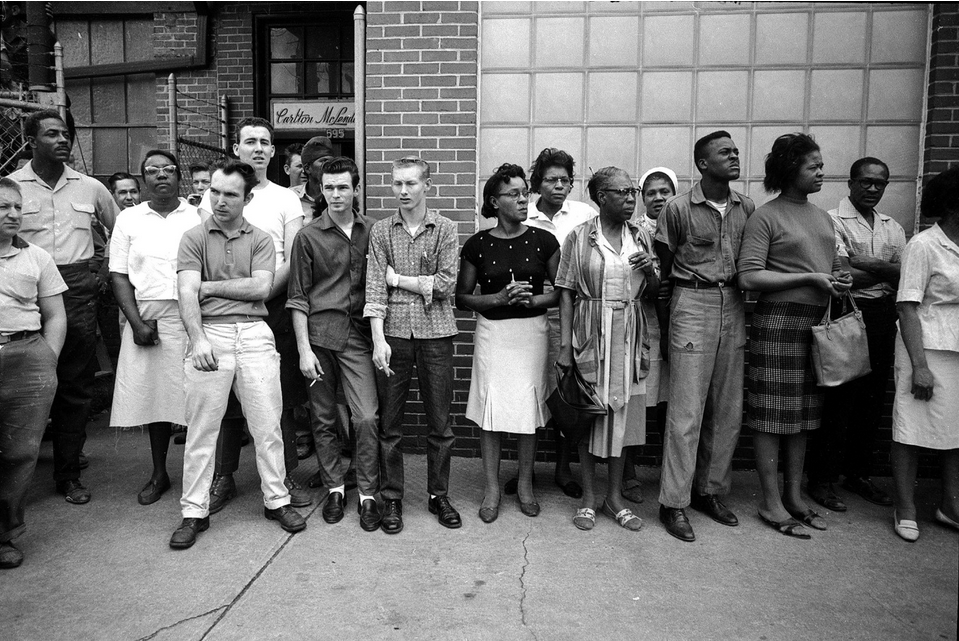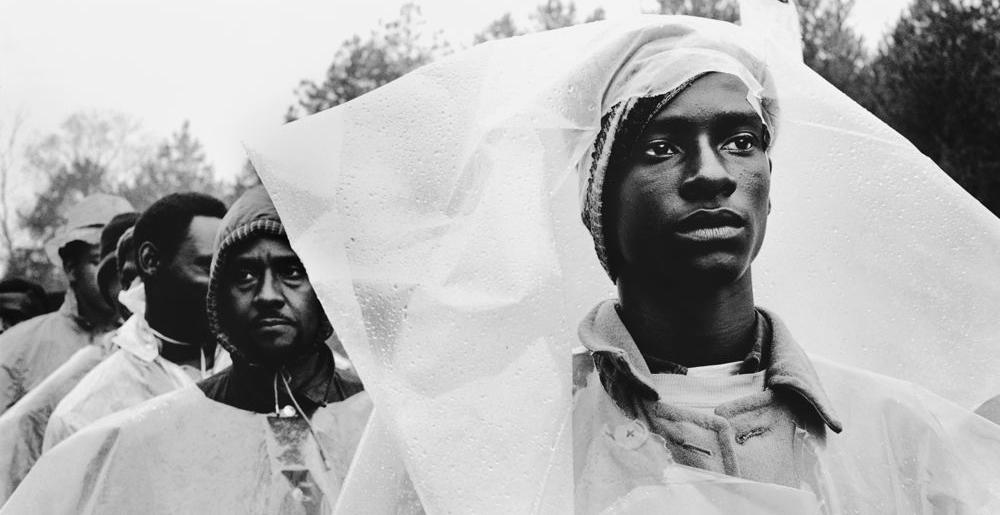Via The Albuquerque Journal
By Kathaleen Roberts
January 3, 2021
“The Violinist,” 1947, by Tony Vaccaro. Courtesy of Monroe Gallery
ALBUQUERQUE, N.M. — Tony Vaccaro reigns as one of the few people to have battled both COVID-19 and the beaches of Normandy.
The photographer will celebrate his 98th birthday with a virtual show at Santa Fe’s Monroe Gallery of Photography through Jan. 17, at monroegallery.com.
Vaccaro contracted Covid early in the pandemic – in April. He spent two days in the hospital.
He couldn’t walk from room to room,” his daughter-in-law Maria said in a telephone interview from their home in Long Island City, New York. “He just stopped eating and had no energy.”
Vaccaro survived, despite a 103-degree fever.
“I am a runner,” he explained. “I’ve been running since I was a child.”
“Peggy Guggenheim, Venice, 1968” by Tony Vaccaro
Courtesy Monroe Gallery
He’s also a fighter who carried a camera from the invasion of Normandy through the reconstruction of Europe, capturing some of the most iconic images of World War II. Drafted at 21, he brought his 35mm Argus C-3 camera with him, spending the next 272 days photographing his personal witness to the carnage. He fought on the front lines, developing his photographs in combat helmets at night and hanging the negatives from tree branches.
Photographer Tony Vaccaro
Photo by R. David Marks
“Normandy to Berlin was just tough,” he said, “because you could get killed any minute. I was in the infantry and in direct contact with the Germans.”
After the war, he remained in Europe, covering the rebuilding of Germany for Stars and Stripes. It was in Italy that he heard the strains of a violin coming from a narrow Venetian street.
“I was in Plaza San Marco in Venice,” he said. “And I had an idea of going into the small streets. So I go in and there was a violinist playing, of course, for people to throw down money. When I heard this violinist, it intrigued me. I went into the tiny streets of Venice and don’t you know, I had met him before in Rome.”
He captured his famous portrait of an American GI kneeling to kiss a little girl by accident. He came upon residents of St. Briac, France, singing and dancing in the streets after the 1944 liberation.
“Kiss of Liberation,” 1944, by Tony Vaccaro
Courtesy Monroe Gallery
“There were these people holding hands and singing a song in French,” Vaccaro said. “Here’s this GI who knows not one word of French. They put a handkerchief under the knees of the little girl. It’s the symbol of a carpet for ladies.”
It was the Handkerchief Dance.
When Vaccaro returned stateside, he worked as a commercial photographer for Look, Life, Harper’s Bazaar, Town and Country, Newsweek and more.
His portrait of the art patron Peggy Guggenheim features a hidden joke. On assignment to do a profile, he followed her to the Guggenheim Museum in Venice. A statue by the Italian sculptor Marino Marini guards the entrance.
“There’s a man on a horse and he’s naked and his penis was as long as half my arm,” Vaccaro said. “She had this habit of whenever she had new guests, she unscrewed it.”
Guggenheim expected a children’s tour group, so she unscrewed the phallus and hid it beneath her cloak. It’s concealed under the garment in Vaccaro’s picture of Guggenheim in the gondola.
“She didn’t want the children to see it,” he said.
“Georgia O’Keeffe, Abiquiú, New Mexico, 1960” by Tony Vaccaro
Courtesy Monroe Gallery
Vaccaro met Georgia O’Keeffe on assignment for Look magazine with art editor Charlotte Willard in Abiquiú in 1960.
The artist refused to speak to him for five days.
O’Keeffe had been expecting a different photographer, one of her favorites, such as Ansel Adams, Todd Webb or Richard Avedon. Trying his best to charm her, Vaccarro cooked the artist a steak and fixed her broken washing machine, to no avail.
“Georgia O’Keeffe at the very beginning didn’t want anything to do with me,” he said. “She didn’t even look at me. She had just left her husband.”
“Guggenheim Hat, New York, 1960” by Tony Vaccaro
Courtesy Monroe Gallery
Suddenly, the topic turned to bullfighting. Vaccaro mentioned he had photographed the great Spanish matador Manolete.
O’Keeffe pivoted to face him. She never looked at Willard again.
Vaccaro still works and goes for regular walks.
“I am shooting, but not as before,” he said. “Before it was survival. Somehow, I have an eye for what’s good before I can click it. I have seen so much that it is really an instinct.”
As for Covid, he said, “I have an idea that the body forgets what it doesn’t like.”
IF YOU GO
WHAT: “Tony Vaccaro at 98”
WHERE: Monroe Gallery of Photography, 112 Don Gaspar Ave., Santa Fe
WHEN: Through Jan. 17
CONTACT: monroegallery.com, 505-992-0800.











,-maury-wills,-dodger-stadium,-los.jpg)














